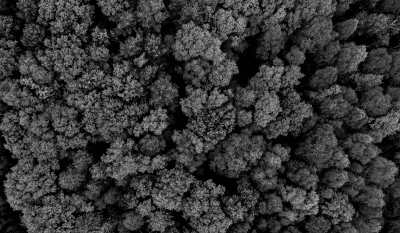calendar_today 30 May 2023
Wrongly considered minor, wild forest products and their supply chains constitute an important economic resource for the country: these include truffles, mushrooms, medicinal herbs, resins, cork and their processing chains. In this regard, recent legislation, although still in an entirely fragmentary way, has attempted to regulate and provide protection for these products and - in an embryonic way - their supply chains as well. See, for example, Legislative Decree 34/2018 known as the Consolidated Text on Forests and Forestry Supply Chains (TUFF)1, whose purpose è is to ensure sustainable forest management that also passes through the development of supply chains of spontaneous non-wood products that can provide income.
Of the many prestigious supply chains, that of the truffle seems to assume a primary role. The significance of the tuber goes far beyond the mere culinary aspect. Its marketing, in fact, è an economic activity that, in Italy alone, involves more than 24 thousand quarrymen and the market is around 600 million2. Suffice it to say that only a couple of months ago, an 830-gram specimen of Alba white truffle è was beaten for 130 thousand euros to a Hong Kong buyer at the world auction held in the Langhe region, live from Grinzane Cavour Castle.
A great excellence of Made in Italy becomes Unesco heritage: the recognition of the truffle
The “Searching for and caving truffles in Italy: traditional knowledge and practices” have become part of the intangible cultural heritage of humanity protected by’Unesco through their inscription in the appropriate Unesco list. The decision è was adopted by the 16th session of the Unesco Intergovernmental Committee meeting in Paris and announced on Dec. 16. The Italian candidacy saw the technical-scientific and institutional coordination of Service II- Unesco Office of the General Secretariat of the Ministry of Culture (MiC). The path è was assisted by the participation of the community, so called truffle community, i.e., an interregional network composed of the main Associations such as the National Association of Truffle Cities (ANCT), and those gathered in groups associated in the National Federation of Italian Truffle Associations (Fnati), as well as other free Associations.
The official status arrived following the submission of the candidacy by the Farnesina in March 2020, but this represents only the outcome of a process that began almost a decade earlier with the truffle associations' petition to the Ministries of Culture and Agriculture. It is, in fact, the first national candidacy for intangible heritage representing the theme of cultural biodiversity, marking an important milestone in the defense of a tradition that is crucial to many areas of our peninsula. The UNESCO recognition è the culmination of cooperation between the Ministry of Culture, the Ministry of Foreign Affairs and International Cooperation (Maeci), the Italian Permanent Representation to UNESCO and the Italian National Commission for UNESCO. The’art of truffle hunting – as pointed out by Coldiretti – involves in Italy a national network of about 73,600 holders and practitioners, i.e. the so-called. truffle hunters, united in 45 groups associated in the Federazione Nazionale Associazioni Tartufai Italiani (FNATI), by individual truffle hunters not united in associations for a total of about 44,600 units; and by 12 other truffle hunters' associations that together with the Associazione Nazionale Città del Tartufo (ANCT) involve about 20,000 free hunters and quarrymen.
Truffle hunting and quarrying in Italy represent an intangible cultural heritage of knowledge and practices handed down orally for centuries that characterize the rural life of truffle hunters in Italian truffle territories, an ancient tradition that unites Italy from North to South declined according to local cultural identity, handed down through practices that tell of a knowledge that brings together rural life and protection of the territory.
The case of truffles and the lack of a unified discipline
To the ever-growing and recognized importance of truffles is linked the inevitable need to search for a regulation that balances the search for a sustainable product and the protection of the environment with economic interest. In this regard, the Senate is still considering a bill aimed at the’adoption of a Consolidated Text for truffle legislation preparatory to a revision of the current national legislation on the subject (Law No. 752 of December 16, 1985)3. Under the old law, framework legislation still in force, the Tuber Magnatum Pico has been commonly called the White Truffle of Alba, Piedmont or Acqualagna for more than 35 years.
It thus gives substance to the territorial origin of the truffle even though, in this regard, there are specifics that cannot be overlooked. It is therefore important to emphasize that this denomination does not refer to the presence of the tuber in the’exclusivity of these territories, but is more simply an appellation that by collective practice identifies a quality of truffle. Identical reasoning è possible with regard to Tuber melanosporum which is vulgarly called the black truffle of Norcia or Spoleto (also in the framework law).
Also in this case, these are territorial connotations that the tuber has taken on over time and have nothing to do with a specific connection to the territory. It is not ruled out or asserted here that most of the production of these products takes place in those places and that the fame of the product is inevitably linked to the city and vice versa, what però è should be kept in mind è that these are not exclusive prerogatives that those cities have because of an exclusive relationship between the product and the territory.
The’importance of European designations
The’identification of a (potentially) generic product with the’use of a specific name risks, at times, being misleading and not in accordance with the legislation of food designations provided at the European level with the’objective of protecting the quality standards of agri-food products, safeguarding their production methods and providing consumers with clear information on the characteristics that add value to products. Perplexities, in truth, arise with reference to the nature of truffles, particularly whether they qualify as a product or raw material. For example, with reference to the white truffle, in particularwith exclusive reference to the city of Alba or Acqualagna, all production, processing and elaboration processes should take place in that specific geographic area.Post that, it is not clear what is meant by processes.
In fact, according to the European Regulation No. 1151 /20124, transposed by Italy by decree of October 14, 20135, the protected designation of origin (PDO) turns out to be referable to a product only if it has characteristics that are due essentially or exclusively to a particular geographical environment. Therefore, only in the’event that these conditions were met could the truffle undoubtedly obtain the Protected Designation of Origin (PDO), thus increasing the notorietyà of the product and excluding non-local productions from the possibility of obtaining the same mark. Because of this, always assuming that it is possible to assimilate a production process to truffles and that it is possible to find and execute all the stages of the production process itself, in the case of Tuber Magnatum Pico, since the latter does not have organoleptic characteristics deriving from the link with the territory, this hypothesis of recognition would seem to be excluded. Yet, that of the truffle è still the recognition of Made in Italy, certainly linked to the territory, but not necessarily to a single circumscribed area. As is well known, geographical indications are based on the territorial qualitative link. They are capable of indicating that in a given area there are natural and human characteristics that bring certain characteristics to a certain type of product.
We do not speak of scientific uniqueness, but rather of the combination of (delimited) territory, method and labor that succeeds in returning as a result that particular product (e.g. Lardo di colonnata). The focus, therefore, è the added value of territorial products. It follows that there is a need for protection that allows the product to stand out and be recognizable on the market for the intrinsic characteristics it possesses. è this is precisely the rationale behind the policy of the European Union, set to protect both consumers and producers, to enable them to recognize each other in the market. This step has yet to be taken for the Truffle, despite the fact that its value has always left no doubt about the need to protect the product. Even wanting, with a stretch, to bring the Alba Truffle back within the scope of Protected Geographical Indication (PGI) one immediately encounters difficulties. This label refers to products originating from a particular place, region or country whose production process is carried out for at least one of its stages in the defined geographical area. In this case, EU Regulation 1151/2012 does not require that the product be qualifiable on the basis of attributes derived from the close link with the territory, in fact, it is sufficient that a reputation for the product and/or place derives from this link. As we have previously reported, it turns out, however, to be particularly difficult to delimit the (natural) proliferation of truffles to a specific territory. For this reason, if the cityà of Alba were to promote the request to obtain the recognition of protected geographical indication in relation to the emergence of truffles in its territory, the cityà of Acqualagna as well as all the others in which one of the production processes takes place exclusively and which enjoy notoriety for it.
Maybe thereò that moreù could make the case for the Truffle – even here with some obvious forcing - è the STG designation, in fact, the regulation also regulates and protects the Traditional Specialities Guaranteed (TSG)6. Agricultural products or foodstuffs “obtained by a method of production, processing or composition that corresponds to a traditional practice” and “obtained from raw materials or ingredients used traditionally” may bear this designation. These are specific, traditional products that comply with national provisions or are consecrated by’use7 (examples of TSGs are “mozzarella” “pizza napoletana”). The quality of which the TSG sign is an expression, therefore, is as a rule independent of the territorial aspect, since reference to a place or area of origin is only possible, and use of the name is permitted by any producer in a European country who complies with the traditional production methods set out in the relevant specification.
The procedure for registering a TSG, in much the same way as for PDOs and PGIs, requires the applicant8 to submit before the competent national authority a special application, including a set of annexes, including the specifications, from which the main information on the product and the production method emerges; the dossier thus composed is forwarded to the Commission for verification of compliance with the requirements of the regulations. Once the registration of a name as TSG has taken place, a protection regime and a system of controls similar to those provided for PDOs and PGIs will find application for operators who market a product complying with the specifications. In light of the above arguments, it is hoped as soon as possible that the Italian Truffle, in its various declinations, now also awarded the effigy of Unesco heritage, can find a proper recognition without any forcing – even created ad hoc if necessary - that protects its origin and supply chain through a regulation that can reduce – if not zero – frauds and imitations to the detriment of the consumer.
1 Legislative Decree April 3, 2018, No. 34, Testo Unico In Materia Di Foreste E Filiere Forestali.
2 Panorama, Who Finds a Truffle Finds a Treasure, October 27, 2021, p. 74
3 Law Dec. 16, 1985, No. 752, Framework Legislation Concerning the Harvest, Cultivation And Trade In Fresh Or Preserved Truffles Intended For Consumption.
4 Regulation (EU) No. 1151/2012 Of The European Parliament And Of The Council Of November 21, 2012 On Quality Schemes For Agricultural And Food Products
5 Decree October 14, 2013, National Provisions For The Implementation Of Regulation (EU) No. 1151/2012 Of The European Parliament And Of The Council Of November 21, 2012, On Quality Schemes For Agricultural And Food Products Regarding PDOs, PGIs And TSGs.
6 originally governed by Regulation (EEC) No 2082/1992 as “Attestations of Specificityà”.
7 For these types of products, the Commission shall establish and manage a special register.












